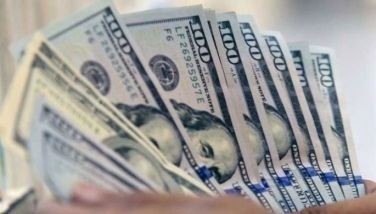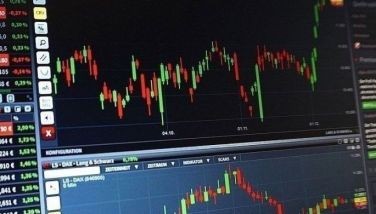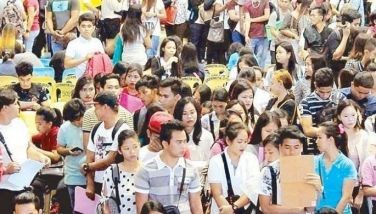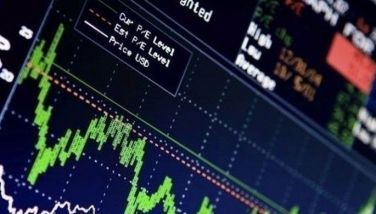The ‘restrictive economic provisions’ in our history

If we go back to our economic history, the Philippine economy has been open to trade and foreign investment in a big way since American colonial times, especially after 1909.
That state of affairs predicated the general economic prosperity of those years, despite the experience of the Great Depression (of the 1930s). 1934 was also the year when the American president signed the law promising Philippine independence.
Free trade during the colonial period. When the United States took possession of us in 1898, our economy became an extension of the American economic market, plain and simple. American-made goods could be sold in the country at no trade barrier, except distance or transport cost.
There were no tariffs on imports from America. As a colony, the Philippines was not a part of the American body politic, so that our exports were treated as “foreign” and US tariffs applied to them.
Philippine exports were principally agricultural products – sugar, coconut products, abaca, and tobacco. Initially, Philippine exports were given preferential tariffs over exports from other countries. When the volumes became large, American colonial policy made sure that these products did not pose a danger to American farming interests.
To encourage trade with us, preferential rates of tariffs were first applied on our major exports. To avoid excessive expansion of imports, the US applied quantity quotas on imports of sugar, coconut products, and abaca products
Eventually, the tariffs were lifted with the exception of those with quantitative quotas. Even then, those industries under quota restrictions accounted for a great volume of Philippine exports to the US and were the major cause of export and income prosperity for the Philippine economy during this period.
The Philippine economy was freely open to foreign investments. American colonial policy encouraged its own citizens to come and invest in the colony. In addition, foreigners doing business in the Philippines at the time were allowed to continue their activities and newcomers welcomed.
In general, foreign immigration into the territory was regulated by the colonial authorities and was essentially permissive. In this way, there was an increase of foreign presence into the country through immigration and permissive commercial policies. The United States made sure that American monopoly of maritime policies involving Philippine trade was asserted. But foreign capital and the continuation of foreign commerce into the country was allowed to encourage economic development.
Under these policies, private investments increased not only from the dominant presence of Americans, but also from European and Asian investors, especially Chinese and Japanese immigrants. These policies also promoted active participation of Filipinos in the development of commerce and industry.
Economic prosperity thrived under this permissive economic policy. In particular, American businesses experienced a dominant presence in major industries. They invested in transport, telecommunication, and energy-based utilities, in export agriculture, in construction, in extractive industries and in commerce and education. The growth of the export sector was heavily driven by American investments, but along with it was also the growth of Filipino businesses.
It was a case of shared economic prosperity for American investors, Filipino businesses and foreigners, too.
The economic progress of the Philippine economy during the American colonial period was a showcase of economic development among occupied territories in those times.
The seed for economic restrictions is born. During this period of rapid economic development, the fight for political independence materialized. Filipino leaders who led this political fight succeeded in securing the independence legislation in the US Congress.
Many agricultural states in the American union provided a strong coalition of votes that favored the grant of Philippine independence to get rid of the competition from Philippine exports of sugar and coconut products. They helped to swing the vote in favor of Philippine independence during the time of the Great Depression when these states suffered economically.
A prior act of independence was the drafting by Filipinos of the Philippine Constitution in 1935. That Constitution included the provision involving “economic restrictions to foreign investments” that spelled out the limitations in foreign participation in the ownership of land, the operations of public utilities, and in the exploitation of natural resources.
This provision in the Constitution did not cause alarm for American interests. As long as they were in political control, American interests would enjoy equal economic rights as Filipinos in the Philippines.
However, for Filipinos, this Constitutional provision would become a sore point in the future. By introducing this provision in the Constitution, which is a foundational law, it introduced an element of inflexibility in the pursuit of policies to promote the participation of foreign capital in Philippine economic development policies.
Too early, too soon, it seemed as if the nationalists wanted to pursue the economic development by restricting foreign capital as if it was not needed. Yet, a young nation would need a lot of capital – including foreign private capital – to develop the economy and promote progress for the nation!
That Constitution, which was approved by the American president to take effect in 1935, paved the way for a 10-year period of complete self-administration by Filipinos under a Commonwealth form of government. In this way, we ran all our political affairs, except foreign affairs and defense, which were left to the United States.
After national elections, the Philippine Commonwealth was inaugurated in 1936. The Second World War in the Pacific interrupted this experiment in 1941, and left the country in its aftermath heavily destroyed.
The restrictive economic provisions begin to bite. The general prosperity of the Commonwealth period was displaced by total disruption of the economy as a consequence of the war. The birth of the independent republic took place as scheduled in 1946 in that desperate economic setting.
However, there was hope for the future for it was handed a substantial economic rehabilitation assistance for recovery, along with a 25-year trade agreement that would assist in economic restructuring from the United States.
But in order to secure these two major tools of postwar economic recovery, the citizens of the nation had to vote to amend the Constitution to enable American citizens to have the same rights as Filipinos in economic matters.
This was the “parity rights” amendment. The American government had to protect the rights of American investments in the country.
(To be continued)
For archives of previous Crossroads essays, got to: https://www.philstar.com/authors/1336383/gerardo-p-sicat. Visit this site for more information, feedback and commentary: http://econ.upd.edu.ph/gpsicat/
- Latest
- Trending



























